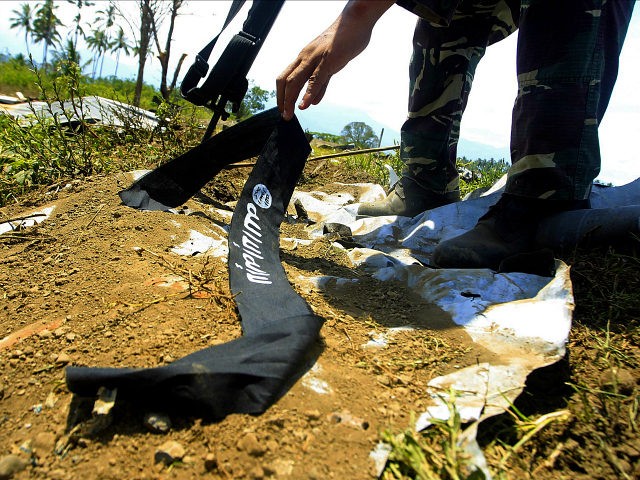While the struggle to eradicate the Islamic State terrorist group focuses largely on Syria and Iraq, its affiliates outside of the Middle East have been gaining strength, largely through the generation of revenue. The Philippines affiliate, Abu Sayyaf, reportedly generated over $7 million in ransoms in the first six months of 2016.
That figure comes from a new report published by the Philippine government, which found that the Abu Sayyaf terrorist group had raised an estimated $7.3 million in ransom payments between January and June 2016. These payments largely came from the families of abducted Indonesians, as the Philippines has an official policy of not paying ransoms to save those abducted by terrorists.
The Philippine Star notes that the terrorist organization, which operates mostly in the southern, Muslim region of the Philippines, has “turned to abductions of foreign tugboat crewmen as military offensives restricted the militants’ mobility.”
Those returned to their families for the most money, the Star adds, were “14 Indonesian and 4 Malaysian crewmen who had been held at Abu Sayyaf jungle bases in Sulu province,” according to the government.
The report also noted that the government appears to have reduced the number of terrorists belonging to the group, but that Abu Sayyaf has increased the number of terrorist attacks executed in response: “Government offensives have reduced the number of militants to 481 in the first half of the year from 506 in the same period last year but they managed to carry out 32 bombings in that time — a 68 percent increase — in attempts to distract the military assaults.”
Abu Sayyaf’s most recent international attack was the kidnapping of the crew of a South Korean cargo ship earlier this month off the southern coast of the Philippines. The men remain in Abu Sayyaf custody and both Philippine and South Korean authorities are working to return them to safety.
Abu Sayyaf is a far older group than the Islamic State — it established itself in 1991 — but pledged allegiance to ISIS “caliph” Abu Bakr al-Baghdadi and currently operates as a wing of the global jihadist outfit. Its most prominent act of terror this year has been the beheading of hostage John Ridsdel, a Canadian, abducted alongside Norwegian Kjartan Sekkingstad. Sekkingstad was eventually freed.
Abu Sayyaf is one of a number of Islamic State affiliates exacerbating its attacks in their respective regions as a U.S.-led coalition prepares sieges against ISIS’s largest centers of command: Raqqa, Syria and Mosul, Iraq. The Islamic State Khorasan Province, the Afghan affiliate, is striving to establish itself in the face of challenges from al-Qaeda and the Taliban, according to U.S. military officials on the ground. “Right now we see them very focused on trying to establish their caliphate, the Khorasan caliphate, inside Afghanistan,” commander Gen. John Nicholson said this week.
In Nigeria, the Islamic State West Africa Province — more commonly known as Boko Haram — killed dozens of soldiers this week in a spate of new attacks. Nigerian President Muhammadu Buhari had claimed Boko Haram no longer existed in an active state in December 2015.
Philippine President Rodrigo Duterte, who took office in June, initially attempted to establish a dialogue with Abu Sayyaf, stating in a speech shortly after his election victory that the Philippines’ Muslims were the victims of “historical wrongs.”
After a series of Abu Sayyaf attacks in response, Duterte changed his tune.
“I will eat you in front of people,” Duterte warned Abu Sayyaf in September. “If you make me mad, in all honesty, I will eat you alive, raw.”

COMMENTS
Please let us know if you're having issues with commenting.